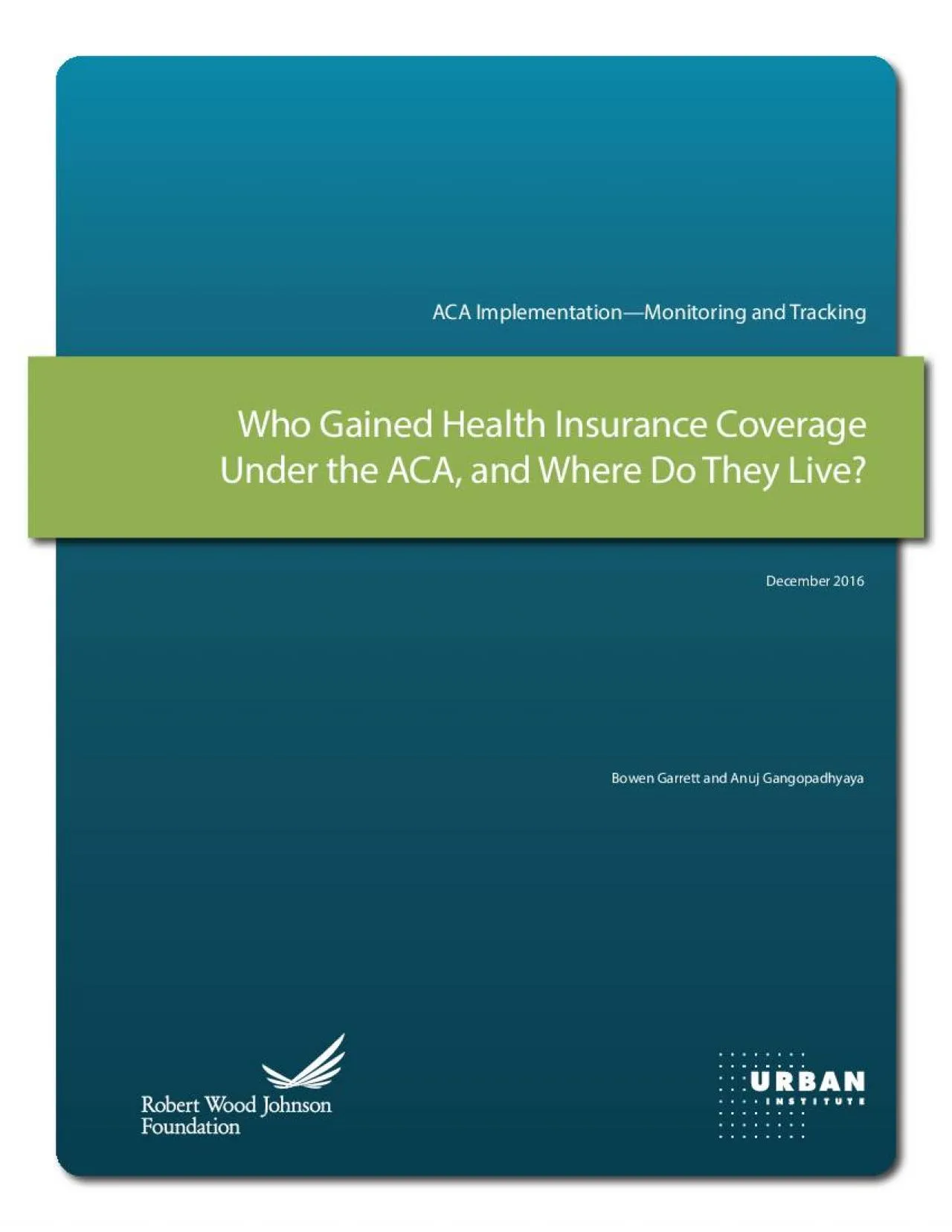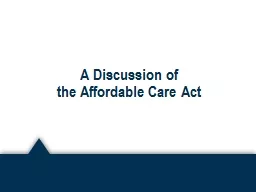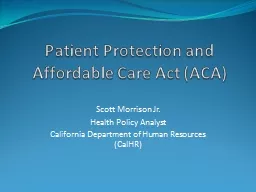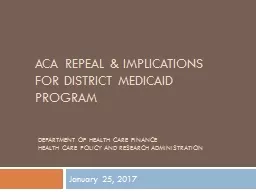PDF-Who Gained Health Insurance Coverage Under the ACA and Where Do They L
Author : oneill | Published Date : 2021-10-09
2IN BRIEFThe A31ordable Care Act ACA became law nearly seven years ago Today the number of Americans lacking health insurance stands at a historic low and the ACA
Presentation Embed Code
Download Presentation
Download Presentation The PPT/PDF document "Who Gained Health Insurance Coverage Und..." is the property of its rightful owner. Permission is granted to download and print the materials on this website for personal, non-commercial use only, and to display it on your personal computer provided you do not modify the materials and that you retain all copyright notices contained in the materials. By downloading content from our website, you accept the terms of this agreement.
Who Gained Health Insurance Coverage Under the ACA and Where Do They L: Transcript
Download Rules Of Document
"Who Gained Health Insurance Coverage Under the ACA and Where Do They L"The content belongs to its owner. You may download and print it for personal use, without modification, and keep all copyright notices. By downloading, you agree to these terms.
Related Documents

